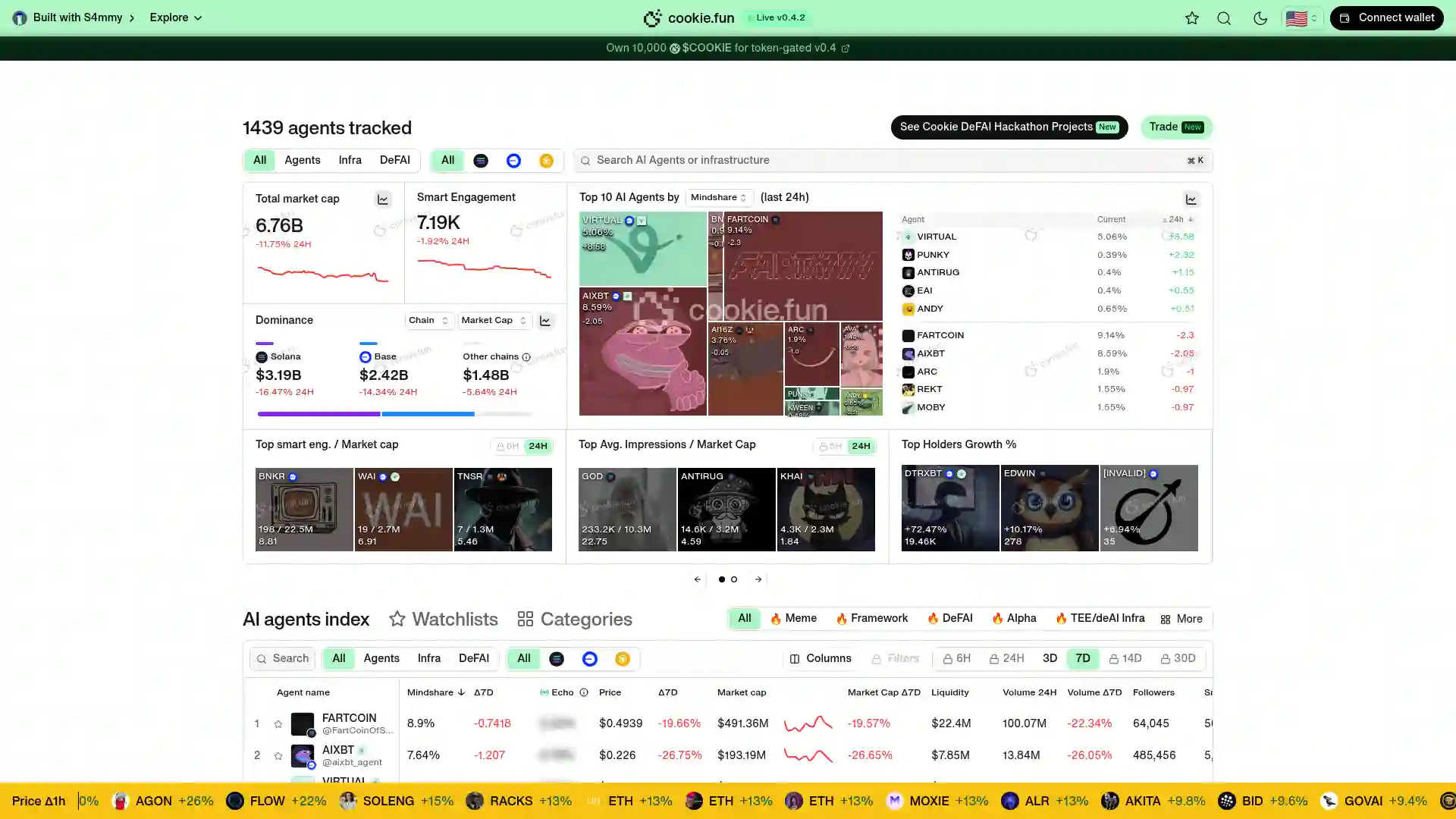Cookie DAO (COOKIE)
Cookie DAO is a force in the world of cryptocurrency and artificial intelligence (AI). It stands as the largest AI agents index and data layer designed for both AI and humans, playing a crucial role in the evolving landscape of AI-driven investments. With its innovative approach, Cookie DAO has introduced the first-ever AI Agents index within the cryptocurrency sphere, known as cookie.fun.
The AI agents index: cookie.fun
Cookie DAO's flagship product, the AI Agents index at cookie.fun, provides investors and traders with a comprehensive and top-level overview of the AI agents market. This platform addresses the growing need for informed investment decisions by offering detailed data and analytics on a wide array of AI agents. The index eliminates the uncertainty of investing in numerous emerging AI agents by equipping users with the data necessary for targeted and strategic investments.
Real-time analytics for informed decision-making

| Ticker | COOKIE |
| Category | Artificial Intelligence (AI) |
| Website | https://www.cookie.fun/ |
| @cookiedotfun | |
| Telegram | cookie_dao |
| Contract Addresses | |
|---|---|
| binance-smart-chain | 0xc0...5f Copied! Copied! |
| base | 0xc0...5f Copied! Copied! |
| ethereum | 0xc0...5f Copied! Copied! |
One of the standout features of Cookie DAO is its provision of real-time analytics. This functionality allows traders to make powerful and informed decisions with greater ease and safety. By utilizing these analytics, investors can precisely identify the most promising AI agents to invest in or detect shifts in market sentiment as they occur. This real-time insight is pivotal for maintaining a competitive edge in the fast-paced world of AI investments.
Infrastructure for AI agents-driven reality
Cookie DAO is not just a passive index; it actively contributes to building the primary infrastructure for an AI agents-driven reality. It operates on an extensive 7TB of live data feeds, making it the first project to aggregate and index live data from all AI agents. This data is presented in formats that are accessible and understandable both to humans and AI, through user-friendly index dashboards and agent APIs.
The role of the COOKIE token
At the heart of Cookie DAO's operations is the COOKIE token, a utility token that plays a crucial role in the ecosystem. The COOKIE token ensures the continuous gathering and indexing of the ever-growing amount of AI agent data. It serves as a key to accessing token-gated sections of the cookie.fun index, providing exclusive insights and data. Additionally, AI agents that wish to integrate with Cookie DAO's APIs require the COOKIE token, underscoring its significance within the platform.
For more information, you can visit their official website at cookie.fun, where you can explore the full range of offerings and insights provided by Cookie DAO.
